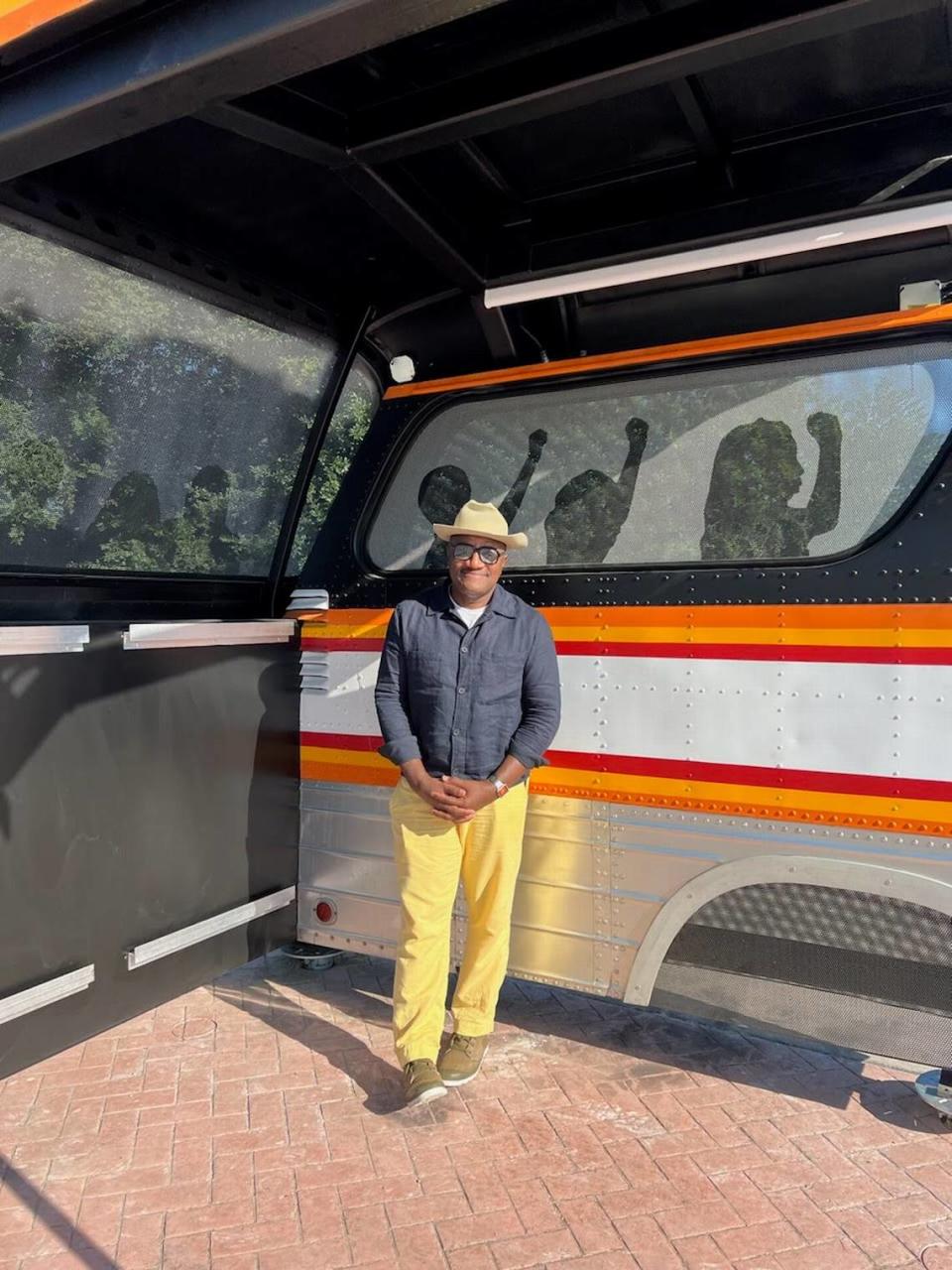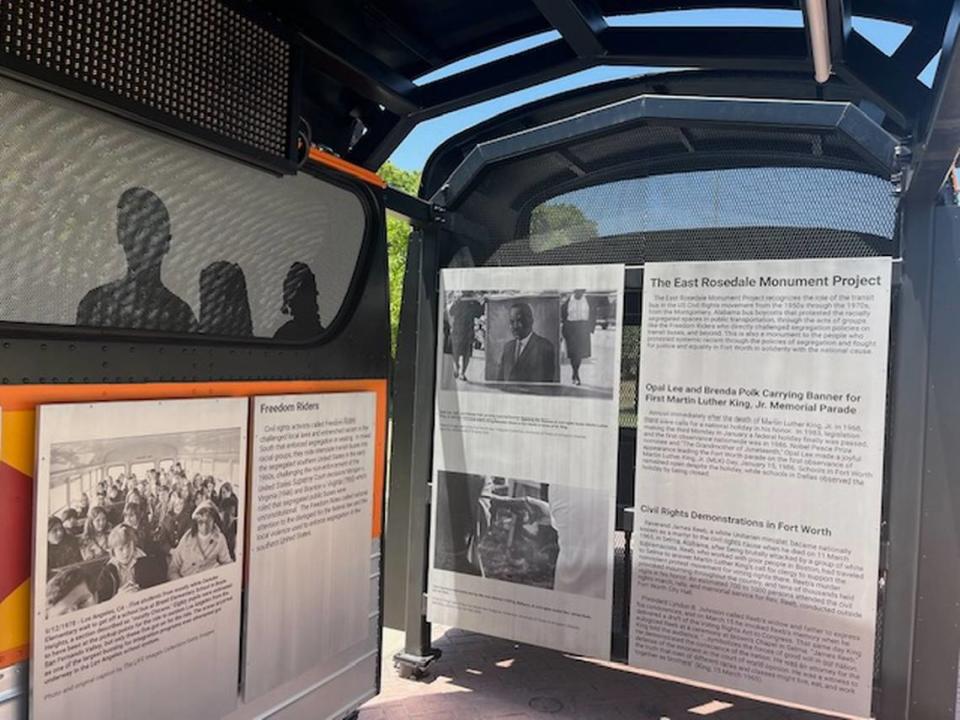See how the shell of an old bus tells the story of the civil rights movement in Fort Worth
The No. 4 Trinity Metro bus slows to a stop near the corner of East Rosedale Street and Evans Avenue, rolling past a new monument that highlights connections between public bus transit and the civil rights movement.
The monument — 10 feet tall and eight feet wide — is a hollowed out vintage white bus with orange, yellow, and red stripes. Silhouettes of children’s heads and arms are in the windows of the bus.
Inside the bus are black and white photographs and engraved panels about the Mansfield High School Desegregation conflict, the Montgomery Bus Boycott, the Freedom Riders and a picture of a young Opal Lee, the grandmother of Juneteenth, carrying a banner for the first Martin Luther King Jr. Memorial Parade in Fort Worth in 1986.
The monument is in the Historic Southside neighborhood at 920 E. Rosedale St., across the street from the site of the planned National Juneteenth Museum and the Southside Community Center.
Installed in June, the East Rosedale Monument Project covers the history of transit buses in the civil rights movement from the 1950s through the 1970s. It connects the struggle for equal rights and justice from a national narrative to a local one.
“The monument belongs to the residents of the Southside,” Christopher Blay, the artist for the East Rosedale Monument Project, says. “I want it to reflect a moment of pride and a place where you can connect its history in a space that is part of the Southside Community.”

The monument was developed under the guidance of Arts Fort Worth, a nonprofit organization that runs the Fort Worth public art program. Its mission is to enhance and commemorate the city’s cultural and ethnic diversity, promote tourism, and ensure a prosperous economy. Arts Fort Worth works with city council members and staff to determine suitable locations for public art projects keeping diversity, equity and inclusion in mind. The East Rosedale Monument Project was funded with $280,000 from bond packages approved by voters in 2004 and 2007.
As the city expanded and repaired East Rosedale Street, it became a favorable location to help revitalize and bring businesses and people to the area, said Alida Labbe, public art project and capital budget manager for Arts Fort Worth.
“It’s such a rich area for culture and history that has such a great story to tell,” said Labbe, referencing other public art projects in the area like those at the Ella Mae Shamblee Library at 1062 Evans Ave. and at Fire Station No. 5 at 850 Irma St.
Blay was selected for the project following a call for artists that began in 2014.
Blay was an assistant photo editor for the Star-Telegram in the early 2000s but now lives in Houston, where he is the chief curator for the Houston Museum of African American Culture. He spent time in the Southside area learning about its people and history and knew it would be a perfect fit for a project.
Transit buses and the civil rights movement
When thinking about East Rosedale Street, he considered the significance of transit buses and the broader civil rights movement and its connections to Fort Worth. Examples of events included civil rights demonstrations in Fort Worth, Martin Luther King Jr.’s visit to Baker Funeral Home Inc. on East Rosedale, and Essie B. Sturges’ protest of segregated transit buses, similar to the protests of Rosa Parks.

Blay used Getty Images and the archives of the Star-Telegram for photos. He also had help from the Tarrant County Black Historical and Geological Society, which showed him landmarks in the neighborhood. He researched, talked to residents and walked the neighborhood over a period of months to make sure the right stories were part of the monument.
Electricity will be added to make the monument visible at night. There will be a poetry contest held this summer, and the winning poem will be displayed on a digital sign inside the monument.
The dedication of the finished project will occur in the fall.
Blay says the opportunity to do this project was a full-circle moment for him as he first learned how to be an artist in Fort Worth.
When asked about East Rosedale as a location for art or investments, he said he thinks about Interstate 35W, which cut through the neighborhood, disconnecting residents. He also thinks about the historic lack of investment in the area.
The residents of Historic Southside deserve to be recognized as valuable, contributing members of Fort Worth like anyone else, he says.
“It’s an equal part of Fort Worth history, and it should be treated as such,” Blay said.


